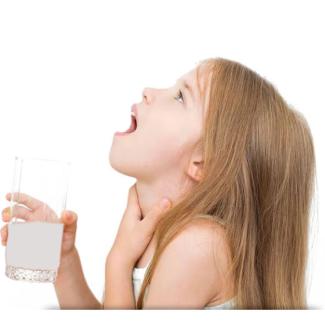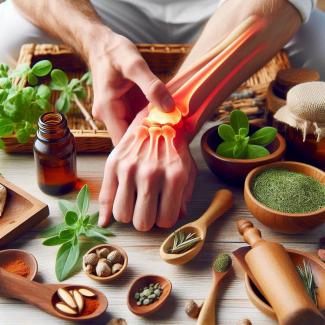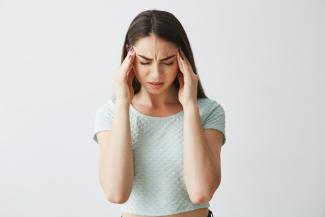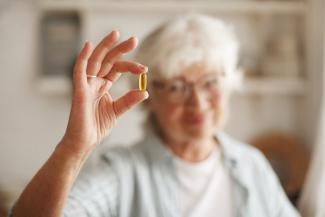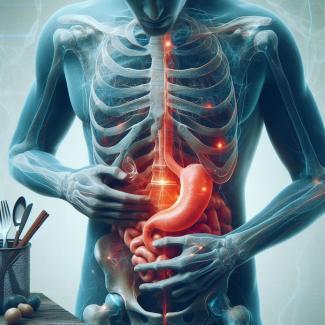
Abdominal pain, especially when localized to the right side after eating, can be indicative of various underlying medical conditions. This comprehensive description aims to explore the anatomy of the right abdomen, possible causes of pain in this area, symptoms associated with these conditions, diagnostic procedures, treatment options, and preventive measures.
Abdominal pain is a common symptom that can result from a variety of causes, ranging from benign to life-threatening conditions. The right side of the abdomen houses several crucial organs, and pain in this region after eating can be particularly concerning. Understanding the anatomy and the potential sources of pain is essential for accurate diagnosis and effective treatment.
Anatomy of the Right Abdomen
The right side of the abdomen contains several important structures, including:
- Liver: Located in the upper right quadrant, the liver plays a key role in metabolism and detoxification.
- Gallbladder: Situated under the liver, the gallbladder stores bile produced by the liver, which aids in the digestion of fats.
- Pancreas: Partially located on the right side, the pancreas secretes digestive enzymes and hormones.
- Right Kidney: Positioned towards the back, the right kidney filters blood and produces urine.
- Ascending Colon: Part of the large intestine that ascends on the right side, involved in absorbing water and electrolytes.
- Appendix: A small, tube-like structure attached to the cecum, located in the lower right quadrant.
- Small Intestine: Including the ileum, the last part of the small intestine that connects to the large intestine in the lower right abdomen.
Common Causes of Abdominal Pain on the Right Side After Eating
1. Gallstones and Gallbladder Disease
Description: Gallstones are solid particles that form from bile cholesterol and bilirubin in the gallbladder. They can block the bile ducts, leading to pain.
Symptoms:
- Severe pain in the upper right abdomen, often radiating to the back or right shoulder.
- Pain typically occurs after eating, especially fatty meals.
- Nausea and vomiting.
- Jaundice (yellowing of the skin and eyes) if a bile duct is blocked.
Diagnosis:
- Ultrasound imaging to detect gallstones.
- Blood tests to check liver function and signs of infection.
- HIDA scan to assess gallbladder function.
Treatment:
- Dietary changes to avoid fatty foods.
- Medications to dissolve gallstones (ursodeoxycholic acid).
- Surgical removal of the gallbladder (cholecystectomy) in severe cases.
2. Hepatitis
Description: Inflammation of the liver caused by viral infections (hepatitis A, B, C), excessive alcohol consumption, or autoimmune diseases.
Symptoms:
- Pain or discomfort in the upper right abdomen.
- Fatigue and weakness.
- Jaundice.
- Dark urine and pale stools.
- Loss of appetite and nausea.
Diagnosis:
- Blood tests to detect liver enzymes, viral hepatitis markers.
- Ultrasound or CT scan to evaluate liver inflammation.
- Liver biopsy in certain cases.
Treatment:
- Antiviral medications for hepatitis B and C.
- Avoiding alcohol and hepatotoxic drugs.
- Supportive care for symptom management.
3. Irritable Bowel Syndrome (IBS)
Description: A functional gastrointestinal disorder characterized by abdominal pain and changes in bowel habits.
Symptoms:
- Cramping and pain, often relieved by defecation.
- Bloating and gas.
- Diarrhea or constipation, or alternating between both.
- Symptoms typically worsen after eating.
Diagnosis:
- Based on clinical symptoms and exclusion of other conditions.
- Rome IV criteria for IBS diagnosis.
- Tests such as colonoscopy or blood tests to rule out other conditions.
Treatment:
- Dietary changes (low FODMAP diet).
- Medications to relieve symptoms (antispasmodics, laxatives, antidiarrheals).
- Stress management techniques.
4. Appendicitis
Description: Inflammation of the appendix, which can cause severe pain and requires immediate medical attention.
Symptoms:
- Sudden onset of pain starting around the navel and shifting to the lower right abdomen.
- Pain intensifies with movement, coughing, or sneezing.
- Nausea, vomiting, and loss of appetite.
- Low-grade fever.
Diagnosis:
- Physical examination (rebound tenderness, Rovsing's sign).
- Blood tests showing elevated white blood cell count.
- Imaging (ultrasound, CT scan) to confirm inflammation.
Treatment:
- Surgical removal of the appendix (appendectomy).
- Antibiotics before and after surgery to prevent infection.
5. Gastroesophageal Reflux Disease (GERD)
Description: A chronic condition where stomach acid flows back into the esophagus, causing irritation.
Symptoms:
- Burning pain (heartburn) in the upper abdomen and chest.
- Pain often occurs after eating, especially when lying down or bending over.
- Regurgitation of food or sour liquid.
- Difficulty swallowing.
Diagnosis:
- Endoscopy to view the esophagus and stomach.
- pH monitoring to measure acid levels.
- Esophageal manometry to assess esophageal motility.
Treatment:
- Lifestyle modifications (elevating head of bed, avoiding trigger foods).
- Medications (antacids, H2 blockers, proton pump inhibitors).
- Surgery (fundoplication) in severe cases.
6. Peptic Ulcer Disease
Description: Sores that develop on the lining of the stomach, small intestine, or esophagus, often due to H. pylori infection or NSAID use.
Symptoms:
- Burning or gnawing pain in the upper abdomen.
- Pain typically occurs after eating or when the stomach is empty.
- Bloating, belching, and intolerance to fatty foods.
- Nausea and vomiting.
Diagnosis:
- Endoscopy to view ulcers.
- Testing for H. pylori infection (breath test, stool test, blood test).
- Upper gastrointestinal series (barium swallow).
Treatment:
- Antibiotics to eradicate H. pylori.
- Medications to reduce stomach acid (proton pump inhibitors, H2 blockers).
- Avoiding NSAIDs and other irritants.
7. Crohn's Disease
Description: A type of inflammatory bowel disease (IBD) that can affect any part of the gastrointestinal tract, commonly the ileum.
Symptoms:
- Cramping and pain in the lower right abdomen.
- Chronic diarrhea, often with blood.
- Weight loss and malnutrition.
- Fatigue and fever.
Diagnosis:
- Colonoscopy and endoscopy with biopsy.
- Imaging (CT or MRI enterography) to assess inflammation.
- Blood tests to check for inflammation markers (C-reactive protein).
Treatment:
- Anti-inflammatory medications (corticosteroids, aminosalicylates).
- Immune system suppressors (biologics, immunomodulators).
- Nutritional support and dietary modifications.
- Surgery to remove damaged sections of the intestine.
8. Other Potential Causes
- Diverticulitis: Inflammation of small pouches (diverticula) in the colon, causing pain, usually in the lower left abdomen, but can occasionally be felt on the right.
- Kidney Stones: Hard deposits of minerals and salts that form in the kidneys, causing severe pain radiating to the lower abdomen and groin.
- Ovarian Cysts: Fluid-filled sacs on the ovary, which can cause pain in the lower right abdomen if they rupture or twist.
- Endometriosis: A condition where tissue similar to the lining inside the uterus grows outside it, causing pelvic pain, especially during menstruation.
Diagnostic Procedures
Accurate diagnosis of the cause of right-sided abdominal pain after eating involves a combination of medical history, physical examination, and various diagnostic tests:
- Medical History and Physical Examination:
- Detailed patient history, including the nature of pain, onset, duration, and any associated symptoms.
- Physical examination to locate the exact area of pain and check for tenderness, swelling, or masses.
- Laboratory Tests:
- Blood tests to check for signs of infection, inflammation, liver function, and pancreatic enzymes.
- Urinalysis to detect urinary tract infections or kidney stones.
- Imaging Studies:
- Ultrasound: Useful for detecting gallstones, liver abnormalities, and appendicitis.
- CT Scan: Provides detailed images of the abdomen to identify conditions like appendicitis, diverticulitis, and kidney stones.
- MRI: Useful for evaluating soft tissue structures and detecting Crohn's disease.
- HIDA Scan: Assesses gallbladder function and bile flow.
- Endoscopic Procedures:
- Endoscopy: To view the esophagus, stomach, and duodenum, and to diagnose GERD, peptic ulcers, and H. pylori infection.
- Colonoscopy: To examine the colon and detect inflammatory bowel disease, polyps, or tumors.
Treatment Options
The treatment for right-sided abdominal pain after eating depends on the underlying cause:
- Lifestyle and Dietary Changes:
- Eating smaller, more frequent meals.
- Avoiding fatty, spicy, and acidic foods.
- Staying hydrated and including fiber-rich foods in the diet.
- Avoiding alcohol, caffeine, and smoking.
- Medications:
- Antibiotics: For bacterial infections like H. pylori or diverticulitis.
- Anti-inflammatory Drugs: For conditions like Crohn's disease and IBS.
- Antacids and Acid Reducers: For GERD and peptic ulcers.
- Pain Relievers: Avoiding NSAIDs if they contribute to ulcers or gastritis.
- Surgical Interventions:
- Cholecystectomy: Removal of the gallbladder in case of gallstones.
- Appendectomy: Removal of the appendix for appendicitis.
- Resection Surgery: For severe cases of Crohn's disease or diverticulitis.
- Supportive Care:
- Nutritional Support: For patients with malabsorption or chronic conditions affecting nutrient intake.
- Physical Therapy: For managing chronic pain conditions and improving overall well-being.
Preventive Measures
Preventing abdominal pain after eating involves several lifestyle and dietary adjustments:
- Healthy Diet:
- Consuming a balanced diet with plenty of fruits, vegetables, whole grains, and lean proteins.
- Avoiding foods that trigger symptoms, such as high-fat or high-sugar foods.
- Staying hydrated and limiting the intake of alcohol and caffeine.
- Regular Physical Activity:
- Engaging in regular exercise to promote digestive health and prevent constipation.
- Maintaining a healthy weight to reduce pressure on the abdominal organs.
- Stress Management:
- Practicing stress-reduction techniques like yoga, meditation, and deep breathing exercises.
- Ensuring adequate sleep and managing work-life balance to reduce stress-related digestive issues.
- Avoiding Harmful Substances:
- Limiting the use of NSAIDs and other medications that can irritate the stomach lining.
- Avoiding smoking, which can exacerbate conditions like GERD and peptic ulcers.
- Regular Medical Check-ups:
- Regular visits to the healthcare provider for monitoring chronic conditions and early detection of potential issues.
- Following prescribed treatment plans and medication regimens for existing health conditions.
Abdominal pain on the right side after eating can be caused by various medical conditions, each requiring specific diagnostic and treatment approaches. Understanding the anatomy of the right abdomen and the potential sources of pain is crucial for accurate diagnosis and effective management. Preventive measures, including dietary and lifestyle changes, can significantly reduce the risk of developing abdominal pain and improve overall digestive health. If you experience persistent or severe abdominal pain, it is essential to seek medical attention to determine the underlying cause and receive appropriate treatment.
How can I prevent abdominal pain after eating?
Preventing abdominal pain after eating involves a combination of dietary modifications, lifestyle changes, and mindfulness about your eating habits. Here’s a comprehensive guide to help you reduce the risk of experiencing abdominal pain after meals:
Dietary Modifications
1. Balanced Diet
- Incorporate a Variety of Foods: Ensure your diet includes fruits, vegetables, whole grains, lean proteins, and healthy fats.
- Fiber Intake: Consume enough fiber to promote healthy digestion. Foods rich in fiber include fruits, vegetables, legumes, and whole grains.
- Stay Hydrated: Drink plenty of water throughout the day to aid digestion and prevent constipation.
2. Identify and Avoid Trigger Foods
- Common Triggers: Fatty, spicy, and acidic foods can irritate the digestive system. Caffeine and alcohol can also cause discomfort.
- Food Diary: Keep a food diary to identify foods that trigger abdominal pain. Record what you eat and any symptoms you experience afterward.
3. Portion Control
- Smaller Meals: Eat smaller, more frequent meals instead of large meals to avoid overloading your digestive system.
- Avoid Overeating: Stop eating when you feel full. Eating too much at once can cause bloating and discomfort.
4. Eating Habits
- Eat Slowly: Chew your food thoroughly and eat slowly to give your stomach time to signal that it's full.
- Regular Meal Times: Stick to regular meal times to help regulate your digestive system.
5. Low-FODMAP Diet
- For IBS: If you have irritable bowel syndrome (IBS), consider a low-FODMAP diet. This involves reducing foods that are high in certain fermentable carbohydrates known to cause symptoms in sensitive individuals.
Lifestyle Changes
1. Physical Activity
- Regular Exercise: Engage in regular physical activity, such as walking, swimming, or yoga, to promote overall digestive health and prevent constipation.
- Post-Meal Activity: Take a gentle walk after meals to aid digestion.
2. Weight Management
- Healthy Weight: Maintain a healthy weight to reduce pressure on your abdominal organs and decrease the risk of conditions like GERD.
3. Stress Management
- Stress Reduction: Practice stress-reducing techniques like meditation, deep breathing exercises, and yoga to manage stress, which can affect digestion.
- Adequate Sleep: Ensure you get enough sleep, as poor sleep can negatively impact your digestive system.
4. Avoid Smoking and Alcohol
- Quit Smoking: Smoking can irritate the digestive tract and worsen conditions like GERD and ulcers.
- Limit Alcohol: Reduce alcohol consumption, as it can irritate the stomach lining and exacerbate digestive problems.
5. Wear Comfortable Clothing
- Avoid Tight Clothing: Tight clothing can put pressure on your abdomen and exacerbate discomfort after eating.
Medical Management
1. Regular Check-Ups
- Routine Visits: Visit your healthcare provider regularly for check-ups, especially if you have chronic conditions like IBS, GERD, or diabetes.
- Early Detection: Early detection of any digestive issues can help prevent complications.
2. Medications
- Follow Prescriptions: Take prescribed medications as directed by your doctor, particularly if you have conditions like GERD, IBS, or peptic ulcers.
- Avoid NSAIDs: Limit the use of nonsteroidal anti-inflammatory drugs (NSAIDs), which can irritate the stomach lining.
3. Probiotics
- Probiotic Supplements: Consider taking probiotics to promote a healthy gut microbiome, which can improve digestion and reduce symptoms of IBS.
Practical Tips for Dining Out
1. Plan Ahead
- Menu Research: Check the restaurant menu in advance to choose healthier options.
- Special Requests: Don’t hesitate to ask for modifications, like dressing on the side or grilled instead of fried options.
2. Be Mindful
- Mindful Eating: Pay attention to what and how much you’re eating. Enjoy your food without distractions like TV or smartphones.
3. Avoid Late-Night Eating
- Meal Timing: Avoid eating large meals late at night. Allow at least two to three hours between your last meal and bedtime to give your stomach time to digest food.
4. Choose Wisely
- Healthy Options: Opt for grilled, baked, or steamed dishes over fried or creamy ones. Choose salads with light dressings and avoid heavy sauces.
Preventing abdominal pain after eating involves a holistic approach that includes making thoughtful dietary choices, maintaining a healthy lifestyle, managing stress, and staying attuned to your body’s needs. By implementing these strategies, you can reduce the risk of experiencing discomfort after meals and improve your overall digestive health. If you continue to experience abdominal pain despite these preventive measures, it is important to seek medical advice to identify any underlying conditions that may require treatment.


